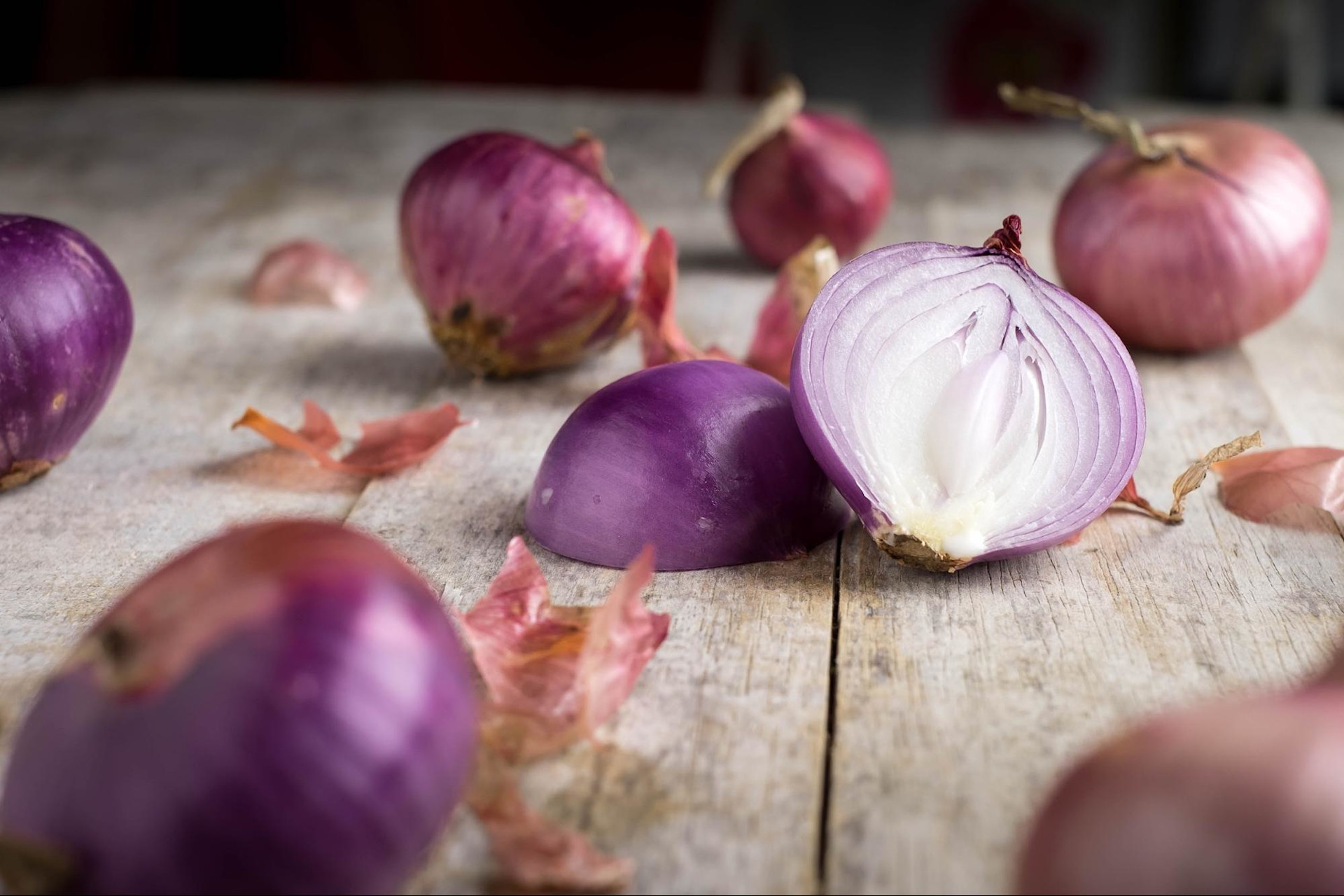What Is the Difference Between Shallots and Onions? Learn How to Use Shallots in Cooking and Easy Caramelized Shallots Recipe
Written by MasterClass
Last updated: Apr 4, 2023 • 4 min read
Often found alongside onions and garlic in the grocery store, shallots are an indispensable ingredient to any pantry, lending a nuanced, soft, and fresh flavor to everything from dressings, to stocks, to quiches. Delicate enough to eat raw and easy to roast to melt-in-your-mouth perfection, shallots are a flexible and supportive building block in many dishes.
Learn From the Best
What Are Shallots?
Shallots (Allium ascalonicum) are a member of the allium family, closely related to onions, garlic, and chives. Whether diced, minced, or sliced, shallots are used for seasoning dishes, either with a soft onion undercurrent or a pop of sharp acidity similar to a hint of garlic. They can also be used to brighten vinaigrettes.
What Do Shallots Look Like?
Fresh shallots are easily identifiable by the following characteristics:
- They are small in size
- Their skin is papery and coppery-pink
- Their flesh is pale purple and white
- Their bulbs grow in clusters, similar to cloves of garlic
When shopping for shallots, look for bulbs with a firm texture.
What Do Shallots Taste Like?
A shallot’s flavor is milder and more delicate than that of a regular onion, though they can often be used in place of common onions (like white onions or yellow onions), and vice versa.
3 Types of Shallots
Generally, there are three main varieties of shallots:
- 1. French gray shallot. Some purists consider this French gray shallot—so named for the grayish hue to its outer skin—to be the ultimate culinary varietal and only “true” shallot.
- 2. Jersey shallot. Pink or “Jersey” shallots have a rosier color, and are the most common variety found in U.S. grocery stores and markets. Jersey shallots are just as functional and delicious as the French gray varietal.
- 3. Echalion. Also known as “banana” shallots, these are a cross between a regular shallot and an onion. Banana shallots have many of the best qualities from each parent vegetable, including the larger size of an onion and the milder flavor of a shallot.
Where Do Shallots Come From?
Shallots are thought to have originated in Central or Southeast Asia before making their way to India and the Mediterranean. The ancient Greeks discovered shallots while trading in a Palestinian port now known as Ashkelon in Israel, while the ancient Egyptians used them as medicinal remedies.
What Is the Difference Between Shallots and Onions?
The biggest distinction between shallots and other onions, besides strength of flavor, is the cellular structure.
Shallots break down much more easily than their larger counterparts when cooked, allowing for a meltier level of caramelization, or a more subtle touch for creating a foundation in things like sauces.
What Is the Difference Between Shallots and Green Onions (Scallions)?
Unlike green onions, whose white and green parts are often used differently in cooking, shallots are uniform in texture and flavor throughout. In addition, shallots have a sharper, stronger flavor than green onions, whose white ends come closest to capturing the same delicate bite. Learn more about green onions (or scallions) in our guide to the mild allium.
How to Cut Shallots in 4 Steps
How you cut your shallots will depend on the recipe you’re using them for. Here are instructions for finely dicing a shallot.
- 1. Remove the papery skin and root end; discard.
- 2. Slice your shallot longways in half.
- 3. Place the cut side of the half down, and slice longways, stopping just before you reach the root end. This will keep the layers together and allow for easier slicing. Use the tip of the knife to slice.
- 4. To fine dice, make a single cut your shallot parallel to your cutting board from tip to root. Then, use the base of the knife to slice across the shallot.
Watch Chef Gordon Ramsay demonstrate how to properly slice and chop a shallot in his Knife Skills lesson video.
How Do You Cook With Shallots?
Shallots can be used in a number of recipes in everything from French to Asian cuisine, and different preparations tune in to different flavor frequencies, taking it from sharp to sweet in an instant. They can be:
- Finely diced
- Sliced into rings and fried
- Roasted whole (either in their skins or peeled)
- Pickled
Raw shallots also make a great addition to salad dressings, and if you find them fresh, their green tops can be used as an aromatic seasoning or garnish, similar to spring onions.
What Are Good Substitutes for Shallots?
If you don’t have shallots, you can substitute the following members of the onion family in your recipe:
- Sweet onions (including Vidalia onions or Maui onions)
- Leeks
- Garlic scapes
- Red onions
- Green onions
Easy Caramelized Shallots Recipe
makes
prep time
5 mintotal time
25 mincook time
20 minIngredients
- 1
Melt butter or oil in a skillet over medium heat.
- 2
Slice shallots crosswise into rings, or halve and slice into half moons. Add to skillet and season with kosher salt and black pepper.
- 3
Cook, stirring occasionally, until shallots begin to brown, about 5 minutes.
- 4
Turn heat to low and continue to cook until shallots soften but do not burn, about 10-15 minutes.
- 5
Top with fresh chopped parsley and enjoy as a condiment on a cheese plate, on toast, or with steak.
Become a better chef with the MasterClass Annual Membership. Gain access to exclusive video lessons taught by culinary masters, including Gordon Ramsay, Alice Waters, Chef Thomas Keller, and more.
